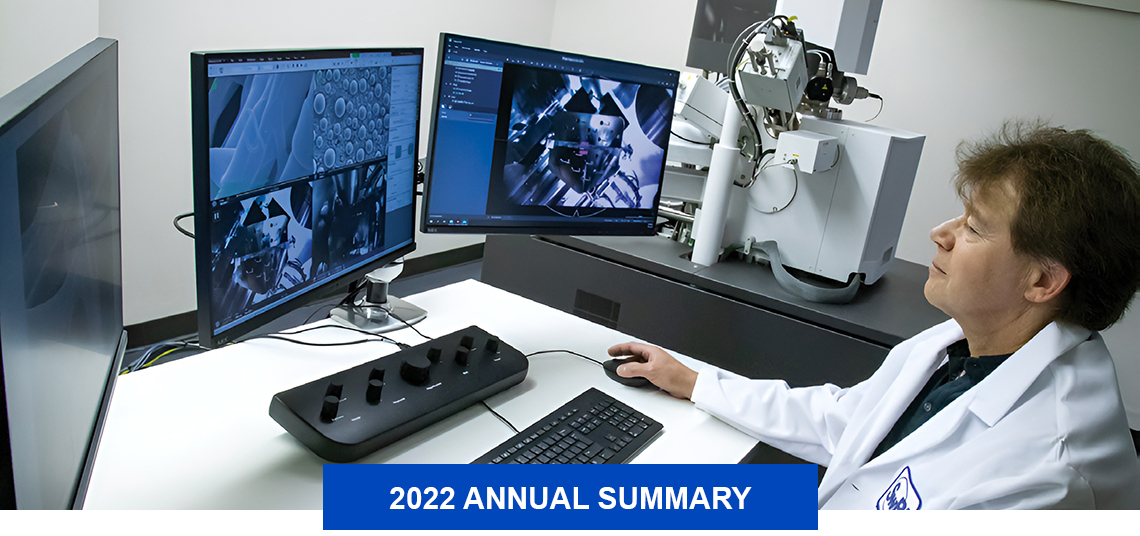
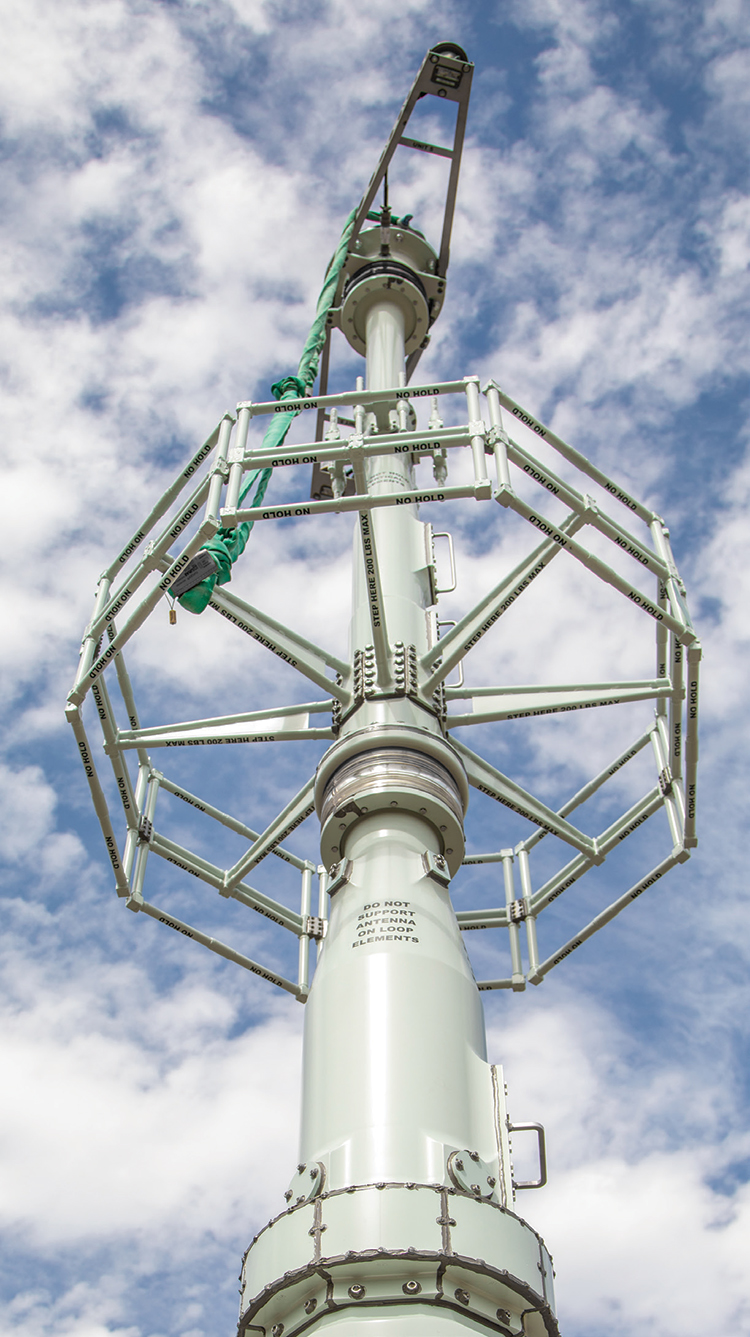
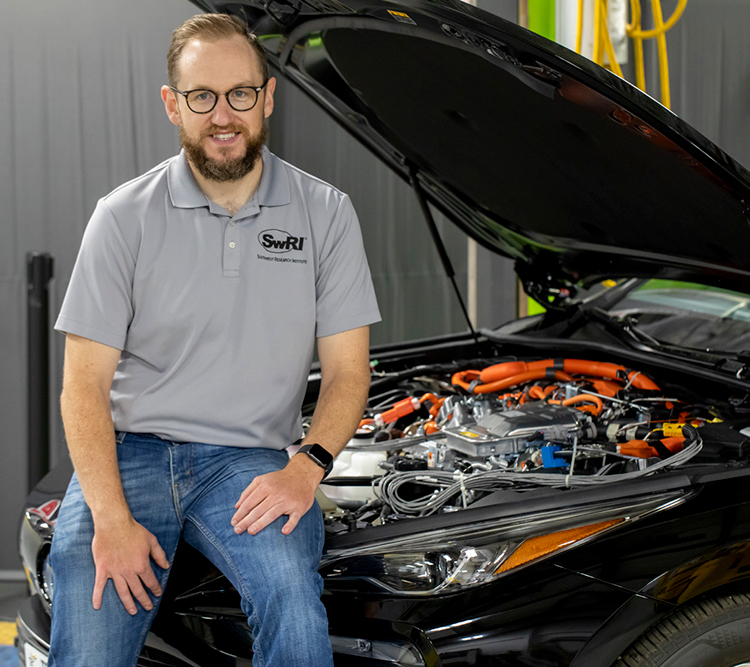
(Above) SwRI’s Powertrain Engineering Division is using hydrogen-powered engines and vehicles to investigate a variety of clean automotive technologies with the goal of reducing greenhouse gas emissions. We also kicked off H2-ICE (Hydrogen-Internal Combustion Engine), a joint industry program addressing heavy-duty applications.
(Left) SwRI specialists in the Defense and Intelligence Solutions Division designed a novel cylindrical slot array to fit near the base of an existing shipboard antenna to take advantage of unused space. The low-profile array encircles the mast, extending the operating frequency range of the antenna while avoiding an expensive redesign of the upper mast.
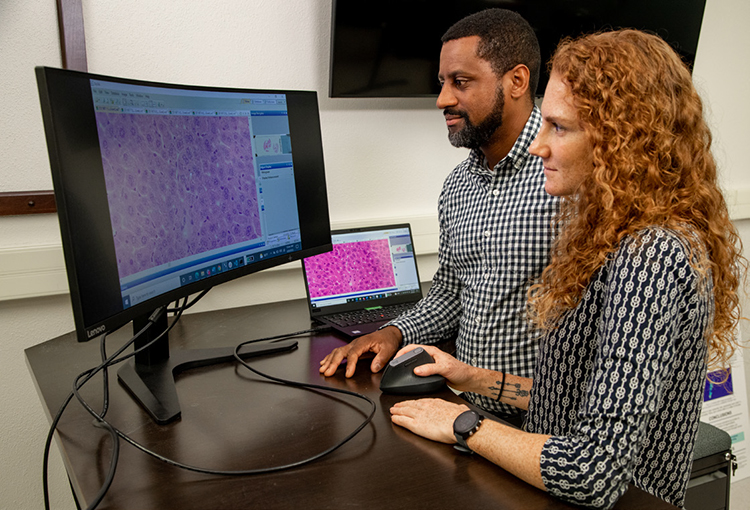
The Intelligent Systems Division is collaborating with several local research institutions and physicians to develop machine vision algorithms that will increase the speed and accuracy of cancer detection and other diagnoses. Here, analysts adapt algorithms to identify chemotherapy-resistant polyploid cells in samples.
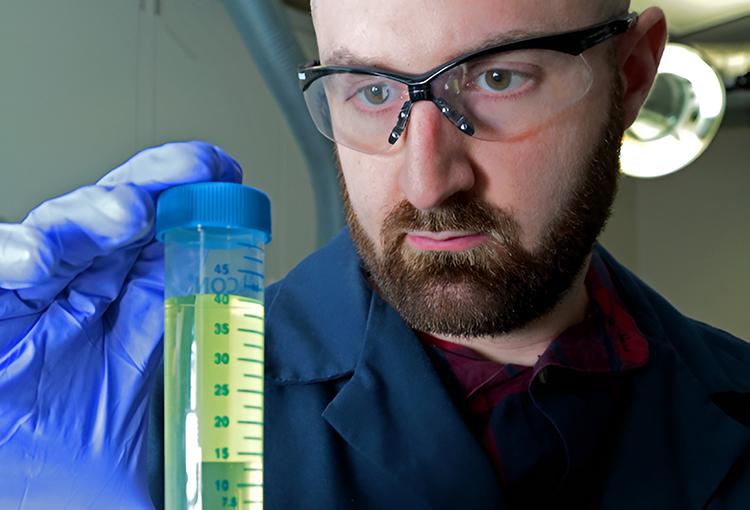
SwRI’s Chemistry and Chemical Engineering Division develops cost-effective means of synthesizing new formulations for plant-based medicines. In 2022, chemists developed a synthetic version of scopolamine, a popular antinausea treatment, marking the first time SwRI has fully synthesized a drug compound that is naturally derived from plants.
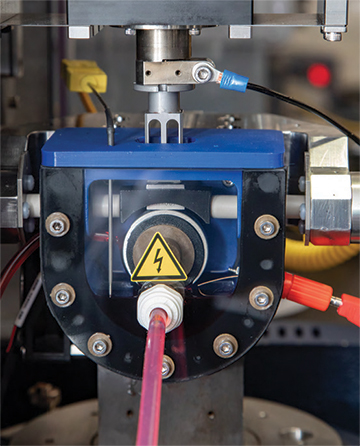
The Fuels and Lubricants Research Division adapted this block-on-ring test system so that the contact interface can now also be subjected to an electrical field (AC or DC) to replicate electric vehicle drivelines and test fluids, materials and coatings.
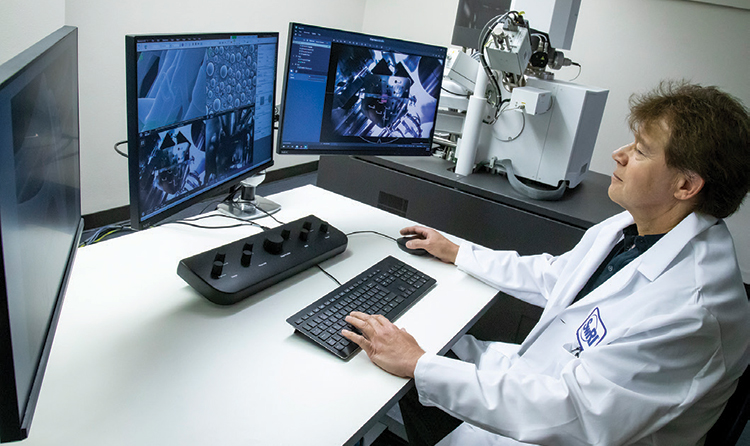
The Mechanical Engineering Division has expanded its materials characterization capabilities with a field emission scanning electron microscope. The ability to produce clear, sharp images of objects magnified a million times will support research into a wide range of materials systems, including thin films and nanomaterials.
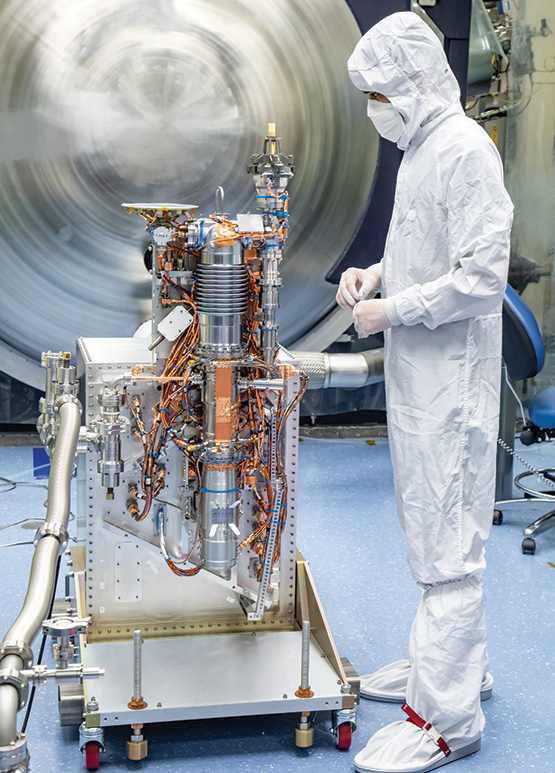
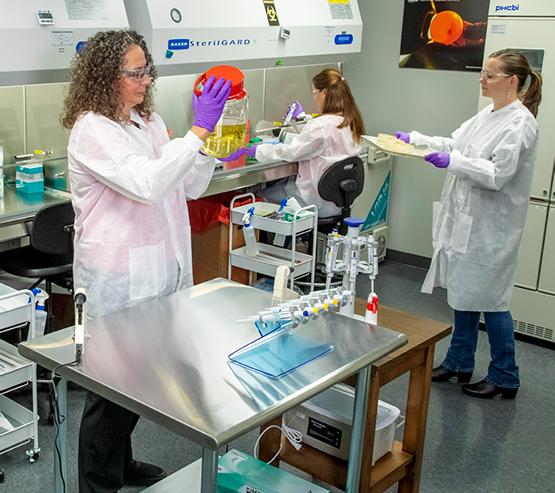
(Left) The Space Science and Space Systems Divisions developed a groundbreaking new mass spectrometer for NASA’s Europa Clipper mission to study the potential habitability of Jupiter’s moon Europa. The MAss Spectrometer for Planetary EXploration (MASPEX) instrument has a mass resolution hundreds of times finer than anything that has flown to space before.
(Above) The microbiology laboratory in the Applied Physics and Applied Power Divisions continued to expand its capabilities and capacities to include studying the efficacy of antibacterial compounds, conducting microcosm studies, monitoring bioburdens and validating decontamination strategies.
